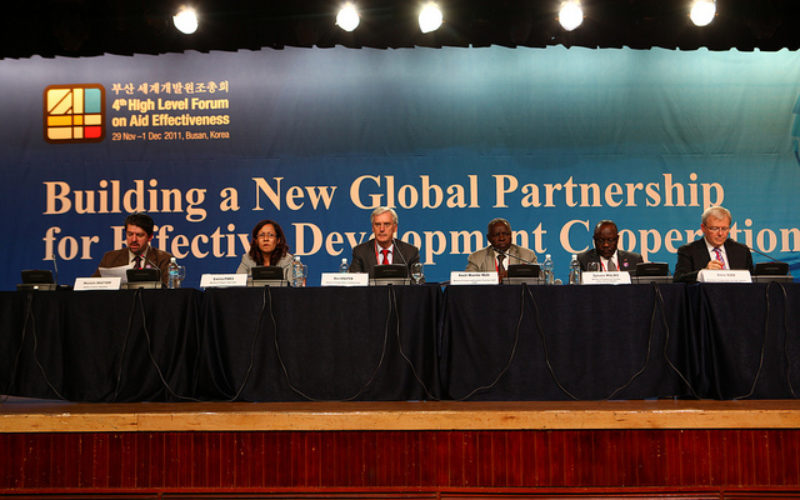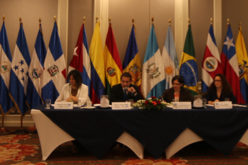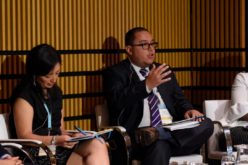by Pauline Ngirumpatse
Making aid and development more effective has been a central aim of development co-operation in the last two decades. Successive meetings have brought together donors and recipients to devise a way forward in addressing the poor development results of aid and development co-operation overall. Indeed, four High Level Fora (HLF 2003, 2005, 2008, 2011) and two High-Level Meetings (HLM 2014, 2016) discussed, shaped and reviewed the effectiveness agenda. This agenda is encapsulated in evolving frameworks ensuing from each meeting: Rome 2003, Paris 2005 & Accra 2008, Busan 2011, Mexico 2014, Nairobi 2016. These frameworks put forward a set of commonly agreed effectiveness principles and commitments. The agenda moved from an initial focus on aid to one on development effectiveness.
In this move towards a focus on effective development, aid effectiveness is often labelled as the ‘unfinished business’ of this evolving agenda. But a closer look at the literature devoted to this programme of reforms reveal a spectrum of unresolved items. What follows are a few of these pending issues:
Lack of a thorough analysis of the unfulfillment of principles and commitments
The move from a focus on aid effectiveness to one on development effectiveness is said to be motivated by, notably, two factors:
- A changing development landscape: It required taking into consideration a diversifying set of actors, forms of assistance and approaches to development.
- A necessity to pay attention to policy coherence: In an era where aid was meant to become less important as a driver of development, an attentiveness to development related non-aid policies was paramount.
But missing between the call for a paradigm shift and a new emphasis on ‘development effectiveness’ was a reflective pause within the effectiveness policy-making space. Five fundamental principles were to make aid more effective:
– ownership by recipient countries of their development strategies, priorities;
– alignment of aid with countries’ priorities, systems and procedures;
– harmonisation by donors of their actions to limit duplication and increase cost effectiveness;
– focus on results: recipients and donors focus on development results that get measured;
– mutual accountability between donors and recipients for development results.
Granted: slow, uneven, inadequate progress was acknowledged, and lagging commitments were identified: alignment to country priorities, predictability of aid, mutual accountability. Why were the agreed aid effectiveness principles and commitments not yet guiding realities of development co-operation? What were the fundamental obstacles? Some accounts of the Busan HLF-4 process (2011) describe an evolving agenda and framework that was never based on discussions and profound examination of why commitments were not met.
And it is not for lack of insights. The literature of the last two decades has tackled these questions profusely. One outstanding limitation of this evolving framework is repeatedly emphasized: The framework mainly focuses on technical and procedural dimensions of development and effectiveness, leaving aside political dynamics/dimensions. This point was acknowledged as the Paris Declaration (2005) was reviewed. However, besides some reframing touches – for instance, from country/government ownership to democratic ownership – the acknowledgment did not translate into an overhaul of the framework.
Lack of a clear meaning and differentiation
The need to broaden focus and attention from ‘aid effectiveness’ to ‘development effectiveness’ has gained momentum with Busan HLF4. But what development effectiveness means specifically and what framework accounts for the intended shift have yet to be articulated.
As it stands, there is no common understanding of what development effectiveness means or entails. The Global Partnership does not offer a specific definition of effective development in its distinction with aid effectiveness and development co-operation effectiveness. As Shannon Kindornay points out, aid effectiveness and development effectiveness, are, at times, used interchangeably or amalgamated. Also, development effectiveness is used by diverse actors with different meanings. She notes at least four usages:
- organizational effectiveness;
- coherence or coordination;
- development outcomes from aid;
- overall development outcomes.
But besides definitional issues and a lack of shared understanding, a framework addressing this new focus has yet to emerge. As mentioned above, the motivations for the shift have been stated. Among those is the need to take into account: a diversity of development actors, approaches and modalities, and aid/non-aid development related policies. The current Global Partnership for Effective Development Co-operation (GPEDC) has yet to address the task at hand of moving from the recognition of a necessity to shaping an action plan. For instance:
- The current principles (ownership, focus on results, inclusive development partnerships, transparency and accountability) have yet to reflect the distinctive approaches of both traditional and non-traditional actors. Or, alternatively, the question remains whether these principles are the most appropriate. Are they the best to render these new dynamics emerging from a landscape in flux?
- The current framework has yet to concretely grapple with what it would take, at the international level, to implement the required structural changes that this emphasis on ‘development’ rather than ‘aid’ effectiveness, points to. That means changes, for example, pertaining to non-aid policies (trade, migration, etc.).
And in the midst of all of this, appeals to not completely forego the aid effectiveness agenda and deal with its unfinished business still resonate. Within the existing literature, another pointed question echoes: is a ‘not so’ perfect agenda, linked to time-bound commitments, preferable to a voluntary one?
So where does this leave things? Perhaps the conceptual blurriness surrounding ‘development effectiveness’ and the conundrum in devising a global framework that addresses it are reminders of what such an endeavour entails. It requires dealing with diverse and competing views on: what development is or should be; how it should be achieved; where the priorities lie. The answers to these questions vary form one actor to another. They are inevitably a contested terrain. Moving ahead with the current consensual approach is showing its cracks. Attending to the conflictual realities of development and development actors towards a global framework poses a daunting but essential task.
Lack of a convening space or spaces yet to invent
One of the achievements of Busan was to bring on board South-South Co-operation (SSC) providers. The Busan Partnership and the subsequent GPEDC had hoped to constitute a common global framework and rallying platform. But by now, China, India and Brazil have exited the GPEDC process, claiming an agenda still dominated by the OECD-DAC and Western norms. The three countries, plus South Africa, did not attend the Nairobi High Level Meeting (HLM2). This begs the question: is a global framework possible (or desirable) when there is not even an agreed forum to discuss it?
If yes, what platform could rally all actors? The UN Development Co-operation Forum is seen by major SSC providers as more representative. But whether it could play that role and what would be the division of labor with the GPEDC remain an open question.
If no, what is the alternative? Could it be national frameworks by recipient countries, regional ones like the common Africa platform or differentiated frameworks by different types of donors/providers? The ‘how’ of each of these frameworks and how synergies would be addressed is yet another unresolved question.
The call for a shift from aid to development effectiveness has left in its wake a host of unaddressed issues while opening up new lines of tension: The aid effectiveness agenda is yet to be fulfilled and the non-achievement of principles/commitments examined; A conception of development effectiveness needs to be articulated in its distinction with aid and development co-operation effectiveness; A development effectiveness framework is still to be devised; A convening platform remains to be agreed upon by the diversity of development actors with differing views – or alternative fora created –. The list could go on.
Development effectiveness has indeed, a spectrum of unfinished business(es) to cope with.
About the author:
Dr. Pauline Ngirumpatse is an independent researcher in international development. She is affiliated to the Réseau d’études des dynamiques transnationales et de l’action collective (Université de Montréal). She was a research consultant for Southern Voice on the Development Effectiveness Programme.
6,691 total views, 2 views today
Related Articles

SDGs have hit the ground running, but global environment is not supportive – says SV’s Chair at the HLPF of the UN, New York






